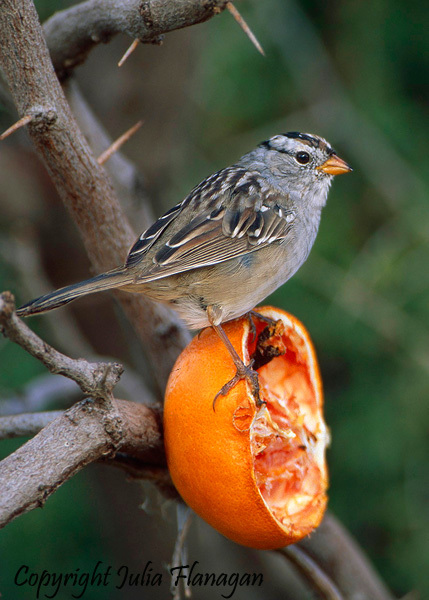
Photos © Julia Flanagan Text by Ellen Katinas |
White-crowned Sparrow At first sight, the White-Crowned Sparrow seems dull and uninteresting. Look closer. His striped crown irresistibly suggests a skunk-patterned cap, which is paired with a pale gray breast like a pearl tie pin. In addition to his fashion quirks, this sparrow is sometimes bilingual! His language skills come from neighborhood and breeding. Because young male sparrows learn songs from their environment, not just their fathers, and because they breed close to where they were hatched, song dialects arise. A male living on the border between two dialects will probably be bilingual. Females sing during territory disputes but more quietly. In addition to eating seeds and insects like most sparrows, White Crowns enjoy grains and fruit. They come readily to backyard feeders but usually stay on the ground and pick up seeds dropped by other birds. Add a brush pile to make your yard even more hospitable. Tangles of brush provide safe cover for the birds in between their expeditions across open grassy ground. Foraging, they scurry and double scratch (backward hop, forward hop, and pounce). They even run, managing one third of a mile in an hour (done on a treadmill in a lab) without fatigue. Two races of this sparrow live year-round in the western United States. Others spread their population throughout much of the U.S. in winter, arriving sometime in September and remaining until the spring. Despite a population decline between 1966 and 2012, White-Crowned Sparrows are plentiful and rate a 7 out of 20 on the Continental Concern Score.
|





